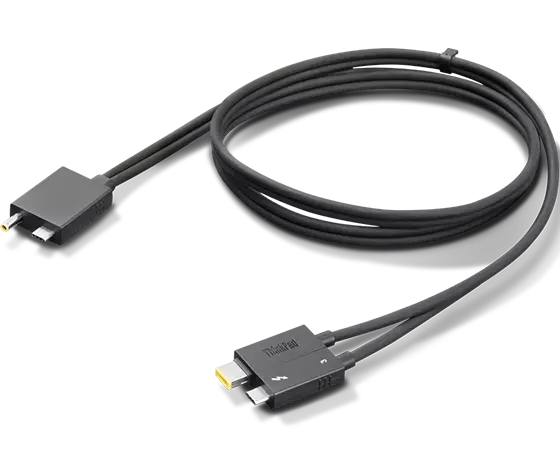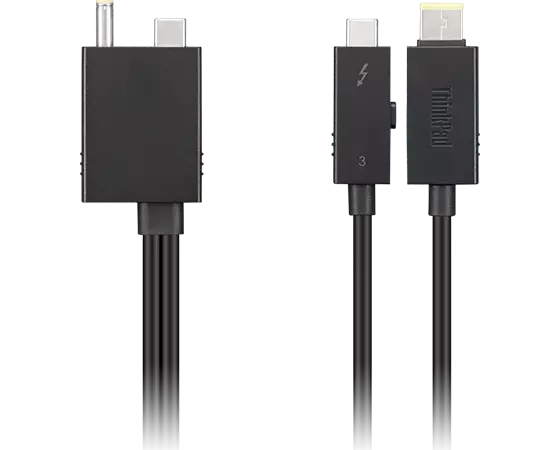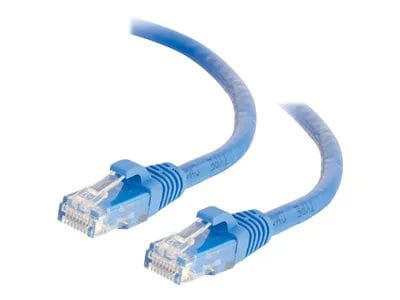260 Matching results
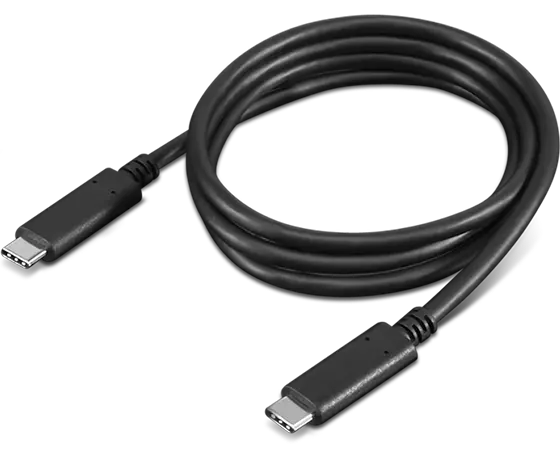 Save $3.00 12% offEst Value$21.99Key Details
Save $3.00 12% offEst Value$21.99Key DetailsData rate 10Gbps
Support max 60W @20V/3A
See MoreSee LessREADY TO SHIP
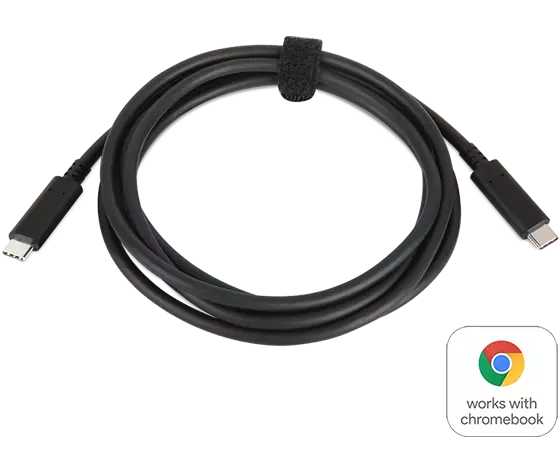 Part Number 4X90Q59480Key Details
Part Number 4X90Q59480Key Details- Date rate 5Gbps 20V/3A 60WLength: 2m (6‘6'')
- Note: Depending on many factors such as the processing capability of the host and peripheral devices, file attributes, and other factors related to system configuration and operating environments, the actual data transfer rate will be slower than 5 Gbit/s on USB 3.1 Gen 1 (USB 3.0) connectors, slower than 10 Gbit/s on USB 3.1 Gen 2 connectors, and slower than 20Gbit/s on USB 3.2 connectors.
Save $30.00 54% offEst Value$24.99- Instant Savings -$5.00
- eCoupon Savings -$30.00
Use eCoupon ACCSAVINGSeCoupon limited to 10 unitsKey Details- Date rate 5Gbps 20V/3A 60WLength: 2m (6‘6'')
- Note: Depending on many factors such as the processing capability of the host and peripheral devices, file attributes, and other factors related to system configuration and operating environments, the actual data transfer rate will be slower than 5 Gbit/s on USB 3.1 Gen 1 (USB 3.0) connectors, slower than 10 Gbit/s on USB 3.1 Gen 2 connectors, and slower than 20Gbit/s on USB 3.2 connectors.
See MoreSee Less-
Part Number 4X91C99226Key Details
Support universal USB 2.0
Plug and play
Convert the USB-C connectivity to USB-A
Save $1.00 10% offEst Value$8.99Key DetailsSupport universal USB 2.0
Plug and play
Convert the USB-C connectivity to USB-A
See MoreSee Less READY TO SHIP
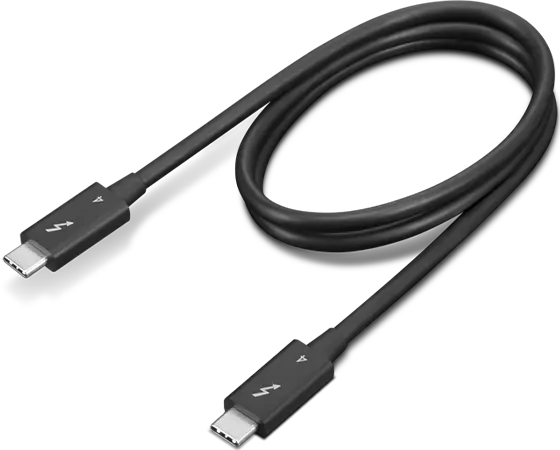 Part Number 4X91K16968Key Details
Part Number 4X91K16968Key DetailsArmed with latest tech of Thunderbolt 4 to unleash the power of your processor, matching updated docks
Optimal length of 0.7m solves the pain point of clutter desk
Lightning speed data with 40 gbps transmission rate to transfer shows, movies, and music in seconds
Fast charging supports up to 100w through USB-C or 170w/230w through DC plug
Save $5.00 11% offEst Value$39.99Key DetailsArmed with latest tech of Thunderbolt 4 to unleash the power of your processor, matching updated docks
Optimal length of 0.7m solves the pain point of clutter desk
Lightning speed data with 40 gbps transmission rate to transfer shows, movies, and music in seconds
Fast charging supports up to 100w through USB-C or 170w/230w through DC plug
See MoreSee Less-
Part Number 4X91K16970Key Details
To better fit the Dock, this split cable is specially designed for TBT4 dock and Thinkpad. This is a backup purchase for users who get their original inbox cable lost or stolen
Armed with latest tech of Thunderbolt 4 to unleash the power of your processor, matching updated docks
Optimal length of 0.7m solves the pain point of clutter desk
Lightning speed data with 40 gbps transmission rate to transfer shows, movies, and music in seconds
Fast charging supports up to 100w through USB-C or 170w/230w th
Save $3.00 6% offEst Value$41.99Key DetailsTo better fit the Dock, this split cable is specially designed for TBT4 dock and Thinkpad. This is a backup purchase for users who get their original inbox cable lost or stolen
Armed with latest tech of Thunderbolt 4 to unleash the power of your processor, matching updated docks
Optimal length of 0.7m solves the pain point of clutter desk
Lightning speed data with 40 gbps transmission rate to transfer shows, movies, and music in seconds
Fast charging supports up to 100w through USB-C or 170w/230w th
See MoreSee Less READY TO SHIP
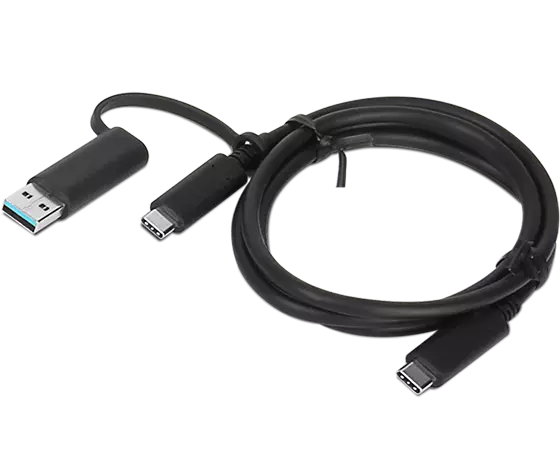 Part Number 4X90U90618Key Details
Part Number 4X90U90618Key Details- Date rate 10Gbps
- USB-C support max 100W @20V/5A
- USB-A support max 7.5W @5V/1.5A
- Length: 1m (3‘3'')
Save $4.00 10% offEst Value$35.99Key Details- Date rate 10Gbps
- USB-C support max 100W @20V/5A
- USB-A support max 7.5W @5V/1.5A
- Length: 1m (3‘3'')
See MoreSee Less-
Part Number 78010957Key Details
High-quality connectivity
Experience a reliable and high-quality connection with the 6 ft 4K HDMI Cable, featuring gold-plated conductors that ensure optimal signal transfer for your UltraHD content.
Durable design
Constructed with a PVC jacket and shielded with aluminum foil and braid, this HDMI cable is designed for durability, ensuring long-lasting performance and protection against interference.
Versatile compatibility
Equipped with male 19-pin HDMI Type-A connectors on both ends, this cable supp
Save $5.20 40% offEst Value$7.79Key DetailsHigh-quality connectivity
Experience a reliable and high-quality connection with the 6 ft 4K HDMI Cable, featuring gold-plated conductors that ensure optimal signal transfer for your UltraHD content.
Durable design
Constructed with a PVC jacket and shielded with aluminum foil and braid, this HDMI cable is designed for durability, ensuring long-lasting performance and protection against interference.
Versatile compatibility
Equipped with male 19-pin HDMI Type-A connectors on both ends, this cable supp
See MoreSee Less -
Part Number 78011502Key Details
Connect the Mini DisplayPort output of a computer to the DisplayPort input of a computer monitor
Carries a digital audio/video signal at a resolution of up to 4K
Built to DisplayPort 1.2 standards
Available in 3, 6 and 10ft lengths
Mini DisplayPort to DisplayPort / Mini DP to DP
Save $7.20 40% offEst Value$10.79Key DetailsConnect the Mini DisplayPort output of a computer to the DisplayPort input of a computer monitor
Carries a digital audio/video signal at a resolution of up to 4K
Built to DisplayPort 1.2 standards
Available in 3, 6 and 10ft lengths
Mini DisplayPort to DisplayPort / Mini DP to DP
See MoreSee Less -
Part Number 78010958Key Details
Enhanced connectivity
The 3 ft Ultra High Definition DisplayPort Cable with Latches from C2G offers a superior connection between your PC and display, featuring male to male 20 pin DisplayPort connectors for a secure and reliable link.
High-quality construction
Constructed with an American Wire Gauge (AWG) of 32 and shielded with PVC, this DisplayPort cable ensures durability and minimizes interference, providing a clear and uninterrupted viewing experience.
Versatile compatibility
Designed to meet t
Save $8.40 40% offEst Value$12.59Key DetailsEnhanced connectivity
The 3 ft Ultra High Definition DisplayPort Cable with Latches from C2G offers a superior connection between your PC and display, featuring male to male 20 pin DisplayPort connectors for a secure and reliable link.
High-quality construction
Constructed with an American Wire Gauge (AWG) of 32 and shielded with PVC, this DisplayPort cable ensures durability and minimizes interference, providing a clear and uninterrupted viewing experience.
Versatile compatibility
Designed to meet t
See MoreSee Less -
Part Number 78014929Key Details
Supports resolutions up to 4K
Adapter in cable form factor
Compatible with 3.1 USB-C and Thunderbolt 3 ports
Reversible, symmetrical USB-C connector
Plug and Play - no driver required
Compatible with the Apple iPad Pro, MacBook, MacBook Air, and MacBook Pro
Compatible with the Microsoft Surface Book 2 and Surface Go
Save $30.00 40% offEst Value$44.99Key DetailsSupports resolutions up to 4K
Adapter in cable form factor
Compatible with 3.1 USB-C and Thunderbolt 3 ports
Reversible, symmetrical USB-C connector
Plug and Play - no driver required
Compatible with the Apple iPad Pro, MacBook, MacBook Air, and MacBook Pro
Compatible with the Microsoft Surface Book 2 and Surface Go
See MoreSee Less -
Part Number 78011079Key Details
- Snagless design for network adapters, hubs, switches, routers, DSL/cable modems, patch panels and other high performance networking applications
Save $2.80 40% offEst Value$4.19Key Details- Snagless design for network adapters, hubs, switches, routers, DSL/cable modems, patch panels and other high performance networking applications
See MoreSee Less -
Part Number 78163808Key Details
- Fast charging, quick syncing USB-C cable
Get a fast charge, up to 50% in around 36 minutes with sturdy USB-C to USB-C cables. Use them at home, in your car, or anywhere you need to sync music, photos, or data and charge your devices. - Stay connected
Tested to withstand 8,000+ bends, these USB-C fast charge cables are built with more strength and flexibility to use over and over again. This makes them ideal for easy placement in your bag to take on-the-go. They're also USB-IF certified so you can cou
$8.99Key Details- Fast charging, quick syncing USB-C cable
Get a fast charge, up to 50% in around 36 minutes with sturdy USB-C to USB-C cables. Use them at home, in your car, or anywhere you need to sync music, photos, or data and charge your devices. - Stay connected
Tested to withstand 8,000+ bends, these USB-C fast charge cables are built with more strength and flexibility to use over and over again. This makes them ideal for easy placement in your bag to take on-the-go. They're also USB-IF certified so you can cou
See MoreSee Less - Fast charging, quick syncing USB-C cable
-
Part Number 78804507Key Details
- High-speed connectivity
Experience rapid data transfer with the VisionTek USB-C cable, boasting a 10 Gbps SuperSpeed+ capability. This feature ensures efficient syncing and file sharing between devices, making it an essential tool for professionals and tech enthusiasts alike. - Enhanced power delivery
With USB Power Delivery of up to 100 W, this cable supports fast charging for laptops, tablets, and smartphones. It eliminates the need for multiple chargers, providing a convenient and clutter-free cha
Save $9.00 20% offEst Value$35.99Use eCoupon ADDCABLEKey Details- High-speed connectivity
Experience rapid data transfer with the VisionTek USB-C cable, boasting a 10 Gbps SuperSpeed+ capability. This feature ensures efficient syncing and file sharing between devices, making it an essential tool for professionals and tech enthusiasts alike. - Enhanced power delivery
With USB Power Delivery of up to 100 W, this cable supports fast charging for laptops, tablets, and smartphones. It eliminates the need for multiple chargers, providing a convenient and clutter-free cha
See MoreSee Less - High-speed connectivity
-
Save $10.00 20% offEst Value$39.99Use eCoupon SHOPDOCKS
-
Part Number 78010959Key Details
10 ft High Speed HDMI Cable with Ethernet
10 Foot HDMI Male to HDMI Male
10' HDMI cable
Supports resolutions up to 4K
Gold plated connectors
Supports 3D Video
Supports CEC extensions
C2G Lifetime Warranty
Save $6.00 40% offEst Value$8.99Key Details10 ft High Speed HDMI Cable with Ethernet
10 Foot HDMI Male to HDMI Male
10' HDMI cable
Supports resolutions up to 4K
Gold plated connectors
Supports 3D Video
Supports CEC extensions
C2G Lifetime Warranty
See MoreSee Less -
Part Number 78015955Key Details
USB Type-A to C Connection
6.6 feet Long
USB IF-Certified
Tested to 8000 Bends
$10.99Key DetailsUSB Type-A to C Connection
6.6 feet Long
USB IF-Certified
Tested to 8000 Bends
See MoreSee Less -
Part Number 78024318Key Details
Tested to conform with the Premium HDMI Cable Certification Program for highest performance and ultra-reliability
Supports all HDMI 2.0 features including resolutions up to 4K (4096 x 2160) at 60 Hz, which means higher quality video for viewing your screen content
In-wall (CMG/FT4) rated jacket, so you can safely run the cable inside of a wall and have a clutter free, clean look
Integrated finger grips on the connectors for easy insertion and removal
Gripping connector shell for 2x greater port rete
Save $8.80 40% offEst Value$13.19Key DetailsTested to conform with the Premium HDMI Cable Certification Program for highest performance and ultra-reliability
Supports all HDMI 2.0 features including resolutions up to 4K (4096 x 2160) at 60 Hz, which means higher quality video for viewing your screen content
In-wall (CMG/FT4) rated jacket, so you can safely run the cable inside of a wall and have a clutter free, clean look
Integrated finger grips on the connectors for easy insertion and removal
Gripping connector shell for 2x greater port rete
See MoreSee Less -
Part Number 78291262Key Details
- Enhanced connectivity
The 10 ft Ultra High Definition DisplayPort Cable with Latches from C2G offers a seamless connection between PCs and display monitors, projectors, or TVs. Its 20 pin DisplayPort connectors on both ends ensure a stable link that delivers high-quality video and audio. - Durable design
Constructed with a 32 American Wire Gauge (AWG) and shielded with PVC, this DisplayPort cable is designed for longevity and robust performance. The inclusion of latches on the connectors prevents acc
Save $12.00 40% offEst Value$17.99Key Details- Enhanced connectivity
The 10 ft Ultra High Definition DisplayPort Cable with Latches from C2G offers a seamless connection between PCs and display monitors, projectors, or TVs. Its 20 pin DisplayPort connectors on both ends ensure a stable link that delivers high-quality video and audio. - Durable design
Constructed with a 32 American Wire Gauge (AWG) and shielded with PVC, this DisplayPort cable is designed for longevity and robust performance. The inclusion of latches on the connectors prevents acc
See MoreSee Less - Enhanced connectivity
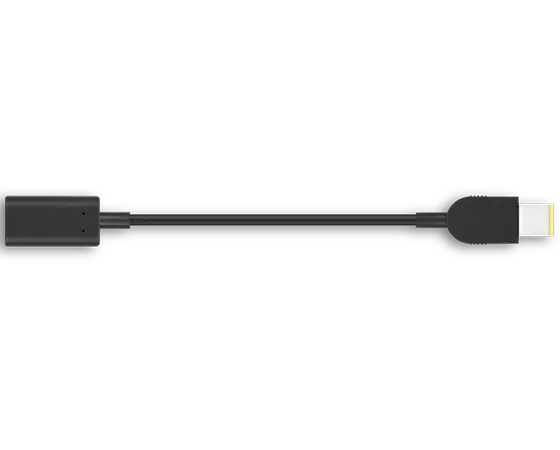 Part Number 4X90U45346Key Details
Part Number 4X90U45346Key Details- Input: USB-C female, min 45W@20V
- Output: slim-tip male, 45W@20V/2.25A
- Length: 18mm (0.7in)
Save $3.00 10% offEst Value$24.99Key Details- Input: USB-C female, min 45W@20V
- Output: slim-tip male, 45W@20V/2.25A
- Length: 18mm (0.7in)
See MoreSee Less-
Part Number 78156203Key Details
- 2 m/6.5 ft DisplayPort to HDMI 2.0 with male connections at each end
- Supports resolutions up to 4K @60 Hz (3840 x 2160p @ 60Hz)
- Fully DisplayPort 1.2 compatible and backward compatible to prior DisplayPort specifications
- Fully HDMI 2.0 compatible
- Nickel plated connector for extended durability
- Clip ensures DisplayPort connection stays fully attached
Save $5.60 20% offEst Value$22.39Use eCoupon ADDCABLEKey Details- 2 m/6.5 ft DisplayPort to HDMI 2.0 with male connections at each end
- Supports resolutions up to 4K @60 Hz (3840 x 2160p @ 60Hz)
- Fully DisplayPort 1.2 compatible and backward compatible to prior DisplayPort specifications
- Fully HDMI 2.0 compatible
- Nickel plated connector for extended durability
- Clip ensures DisplayPort connection stays fully attached
See MoreSee Less
DisplayPort to HDMI Adapters
DisplayPort – or DP – is a technology used to connect the source of a video to a display device such as the monitor of a computer. DP was developed by a consortium of chip and PC manufacturers to help standardize digital displays. The goal was to replace previous protocols like VGA, FPD-Link, and Digital Visual Interface (DVI).
DP can transmit video and audio simultaneously or both individually. One is not needed to transmit the other.
DP continues to be compatible with other interfaces. The most commonly known of those interfaces is HDMI. To connect DisplayPort to HDMI and others, including DVI, users need display port adapters.
Types of Display Port Adapters
Although there are many different types of display port adapters available, the most common ones are DisplayPort to HDMI adapters. Displayport to HDMI adapters makes connecting most devices to an external monitor easy.
Display Port HDMI Cable
When you are choosing a display port to HDMI cable, there are a few things to consider. Cable length is one factor, depending on the distance between your video source and the monitor on which you plan to display it. Around 6 feet to 10 feet is a common length for DisplayPort to HDMI cables.
However, some manufacturers offer longer cables. If your preferred option exceeds 10 feet in length, you need to consider placing the cable in a location where it is less likely to be damaged by foot traffic or other daily wear and tear.
The output quality is another key consideration for your DisplayPort HDMI cable. Generally, the combination of DisplayPort and HDMI offers the highest performance for all display needs Both technologies and display port to HDMI cable types support High Dynamic Range (HDR) and High Definition Content Protection (HDCP). They also work with up to 16 bits of color depths. That means users can enjoy the highest-quality images their DP-enabled device will support.
Double HDMI Cable
A double HDMI cable connects one HDMI outlet to another. These cables are most commonly used between laptops or PCs and external monitors. Connecting those devices allows users to display content on a larger screen, which is ideal when presenting to a bigger audience.
Display Port to VGA Adapters
VGA displays used to be the gold standard of video display not so long ago. As VGA is gradually becoming a legacy technology, it is not yet time to discard VGA monitors or projectors. In fact, those displays still feature in a majority of homes and offices.
Display Port to VGA adapters offers a simple plug-and-play option to connect DP-enabled laptops and computers to VGA displays. Setup is hassle-free and can usually be completed within minutes.
The adapter makes the (mostly newer) DP device compatible with the (older) VGA device. Most adapters feature small screws on the VGA end of the cable to avoid accidental disconnection.
VGA displays are also known as D-Sub displays. Any VGA to HDMI adapter is also a D-Sub to HDMI cable. In general, a D-Sub to HDMI cable requires the same care and basic maintenance as other display connectors and adapters.
DP to HDMI Cable Features
Simplicity
Simplicity is one of the most obvious characteristics of DP to HDMI cables. Most DPort to HDMI cable options connects through a simple plug-and-play system. There is no need for special instructions, and the connection is held securely in place through integrated latches.
Disconnecting a DP to an HDMI cable is equally simple. All you need to do is press the release lever keeping the latch in place, and the connector comes off. It is a simple, efficient design that can work well for years whilst also meeting all DP HDMI cable standards.
High-Tech Capability
As video technology has undergone impressive changes over the last decade or so, supporting technology has needed to keep up with those developments. Today, it is not uncommon to find DisplayPort to HDMI cable 4k capability matching the output of leading consumer camera technology, for example.
Without DisplayPort to HDMI cable 4k capability, your 4k video would display at a lesser rate and a lower quality. The viewing experience would be diminished substantially. At the same time, if you need your cable to support 4k video, the cable itself needs to be of a high enough quality. In most cases, that means opting for premium high speed cables that can deliver 18 GB per second or more.
Lower quality cables may still work in a pinch, but once again, the viewing experience will be diminished with surround sound missing or so-called snow added to the images.
Little to No Maintenance
DP to HDMI cables require little to no maintenance. Choosing a high-quality cable pays dividends on any purchase as those cables tend to be stronger and less prone to breaking through day-to-day handling.
Especially if you are planning to travel with your DisplayPort HDMI cable, choosing the highest quality possible will prevent nasty surprises. Once installed, if your cable remains mostly static, supporting a standard monitor setup, that cable can last for years. However, presenting in different locations means regularly setting up and breaking down your DisplayPort HDMI cable.
Every time that happens, it is possible to damage the connector. In addition, rolling up a DP HDMI cable inside a laptop bag or other luggage may damage connectors and cable over time. To keep your DisplayPort to HDMI cable safe, just add soft rubber protectors over the sensitive connectors. Those covers prevent obvious damage. They will also prevent dust and dirt from entering the electronics and causing damage over a period of time.
Which DisplayPort to HDMI cable should I Buy?
Choosing DP to HDMI cables need not be difficult. It is always a good idea to select a reputable brand for your cable needs and pick a DPort to HDMI cable that comes with a warranty. Adapters like these may not amount to big-ticket electronics purchases but having to replace them frequently is both inconvenient and wasteful.
Some of the best DisplayPort to HDMI cables last for years and continue to work long after any potential warranty has finished.
DP and HDMI – What is the Difference?
If you are not particularly interested in computers and their features, you could be forgiven for not noticing the difference between DP and HDMI ports. From the outside, both systems look remarkably similar.
However, depending on what you are expecting to achieve by connecting your devices, one may work better than the other. For example, your monitor may support both types of connection but not every version of each. If that is the case, your selection could already be restricted.
HDMI is more commonly found in TVs than in PCs. Even as an occasional user, chances are you are familiar with HDMI but not necessarily with DP. Whilst DP looks similar, this connector is more closely associated with PCs. Most DP outlets accommodate HD video and audio.
When it comes to buying the best cables for the job, it is important to look for options featured on DP’s certified list to ensure the cable can support high-quality outputs. DP connectors come into their own when you start looking at driving multiple monitors from one single point of connection. Whilst this may be more than most home users or even office users need, having the option can come in handy.
Many laptops now also send DP signals through USB-C ports, adding even more connection options.
Numbers Matter
When you are choosing between HDMI and DP, look beyond the two systems. Both have different versions which lead to a stronger, higher-quality connection. Whilst DP has its advantages over HDMI in principle, HDMI may still be the better choice if your device only supports a lesser version of DisplayPort. In that case, a higher version of HDMI could be the better option, as long as every device you connect does support that version of HDMI.
Remember that your entire display system is only as strong as its weakest link. Assuming your monitor supports HDMI 2.1 but your video card is limited to HDMI 2.0, your output will only reach 2.0 quality. You simply will not benefit from the advantages of the new and improved HDMI technology until you upgrade that video card.
The same can be said for DP to HDMI adapters. Choosing lower quality adapters often leads to repeat purchases. Low-quality connectors are more likely to break, and the same can be said for cables. Thinner, less well-protected cables that are subject to high traffic and regular movements are likely to fail sooner than their stronger counterparts.
DisplayPort cables and adapters come in countless combinations and a variety of different lengths. Similar to other electronics purchases, it is often a good idea to buy the best option you can afford. Remember, in many cases you are buying technology you would like to use for several years. Investing a little more in the beginning pays dividends in the long term.
Choosing between DP and HDMI technology depends on your individual setup. There is not one correct answer for all users. It is worth taking the time to check all the devices you may want to connect to decide on the best option. You may also find that for some projects, DisplayPort specifications work better than HDMI, whereas the opposite is the case for other projects.
If you are traveling frequently and relying on external monitors in other locations, keeping a variety of adapters is a great option. It allows you to take advantage of the best possible technology at your disposal and avoids becoming stuck if there is a problem.



Consumers Only: Lenovo.com sells and ships products to end-user customers only. Lenovo may cancel your order if we suspect you are purchasing products for resale.
Limits: Limit 5 per customer. Offers valid from Lenovo in the US only. Lenovo may increase or decrease these limits, from time to time, for certain offerings.
Ship date: Shipping times listed are estimates based on production time and product availability. An estimated ship date will be posted on our order status site after your order is placed. Ship dates do not include delivery times which will vary depending on the delivery method selected at checkout. Lenovo is not responsible for delays outside of our immediate control, including delays related to order processing, credit issues, inclement weather, or unexpected increase in demand. To obtain the latest information about the availability of a specific part number, please call the phone number listed in the masthead at the top of this page.
Same Day Shipping: Products ship within the same business day (excl. bank holidays and weekends) for orders which have been placed prior to 3pm ET and which are prepaid in full or payment approved. Limited quantities are available. Software and accessories will be shipped separately and may have a different estimated ship date. Same day shipping may not be available for some orders placed with Lenovo Financing and Katapult payment options.
Availability: Offers, prices, specifications and availability may change without notice. Lenovo will contact you and cancel your order if the product becomes unavailable or if there was a pricing or typographic error. Products advertised may be subject to limited availability, depending on inventory levels and demand. Lenovo strives to provide a reasonable quantity of products to accommodate estimated consumer demand.
General: Review key information provided by Microsoft that may apply to your system purchase, including details on Windows 10, Windows 8, Windows 7, and potential upgrades/downgrades. Lenovo makes no representation or warranty regarding third-party products or services.
Trademarks: IdeaPad, Lenovo, Lenovo Legion, ThinkPad, ThinkCentre, ThinkStation, Yoga, the Lenovo logo and the Lenovo Legion logo are trademarks or registered trademarks of Lenovo. Microsoft, Windows, Windows NT, and the Windows logo are trademarks of Microsoft Corporation. Ultrabook, Celeron, Celeron Inside, Core Inside, Intel, Intel Logo, Intel Atom, Intel Atom Inside, Intel Core, Intel Inside, Intel Inside Logo, Intel vPro, Itanium, Itanium Inside, Pentium, Pentium Inside, vPro Inside, Xeon, Xeon Phi, and Xeon Inside are trademarks of Intel Corporation or its subsidiaries in the U.S. and/or other countries. Other company, product or service names may be trademarks or service marks of others.
Warranty: For a copy of applicable warranties, write to: Lenovo Warranty Information, 1009 Think Place, Morrisville, NC, 27560. Lenovo makes no representation or warranty regarding third party products or services. The Lenovo Limited Warranty applies only to Lenovo hardware products purchased for your own use, and does not transfer upon resale.
Battery: These systems do not support batteries that are not genuine Lenovo-made or authorized. Systems will continue to boot, but may not charge unauthorized batteries. Attention: Lenovo has no responsibility for the performance or safety of unauthorized batteries, and provides no warranties for failures or damage arising out of their use. Battery life (and recharge times) will vary based on many factors, including system settings and usage.
Pricing: Does not include tax, shipping and handling, or recycling fees. Reseller prices may vary.




